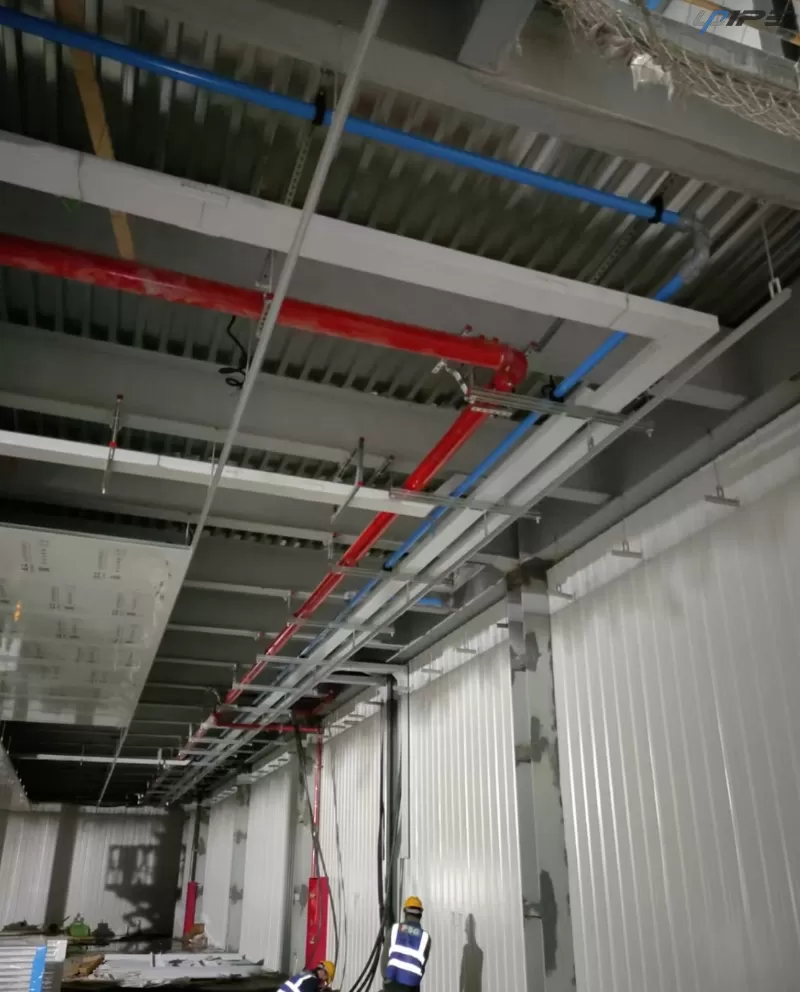As high quality aluminum air line system factory, UPIPE will share the advantages of aluminum compressed air piping system for sale, its applications, etc.
Learn more
Efficient air compressor pipe line installation is crucial for optimizing compressed air systems in industrial and commercial environments. Proper installation ensures minimal energy loss, stable airflow, and longevity of equipment. In this blog post, UPIPE, an aluminum compressed air piping system exporter, will share air compressor pipe line installation, including requirements, materials, planning layout, etc.
* Air demand: Assess total compressed air consumption to determine pipe diameter and layout.
* System pressure: Identify the required working pressure; this affects pipe material selection.
* Environmental factors: Temperature, humidity, and exposure to corrosive agents can impact long-term performance.
A precise assessment at this stage prevents inefficiencies and reduces the need for costly modifications later.
* Aluminum pipes: Lightweight, corrosion-resistant, and easy to assemble; ideal for modular systems.
* Stainless steel pipes: High durability and suitable for food, pharmaceutical, and high-purity applications.
* Copper pipes: Offer excellent corrosion resistance and thermal stability.
* Galvanized steel: Cost-effective for heavy-duty industrial use but requires careful maintenance.
Each material has specific installation considerations, so aligning your choice with operational needs is critical.
1. Minimize bends and fittings: Excessive turns increase turbulence and energy loss.
2. Use a trunk-and-branch design: Main lines carry large volumes of air, while branches serve individual equipment.
3. Consider expansion and contraction: Thermal variations can cause pipes to expand; include expansion joints where necessary.
4. Strategic placement of drains: Condensate traps should be positioned at low points to prevent water accumulation.
A properly designed layout directly impacts both efficiency and reliability.

1. Site Preparation: Ensure mounting surfaces are level and accessible for maintenance.
2. Pipe Cutting and Assembly: Cut to length, deburr edges, and use recommended fittings to avoid leaks.
3. Mounting and Support: Secure pipes with hangers or brackets, maintaining correct spacing to prevent vibration stress.
4. Leak Testing: Pressurize the system with air and check joints with soapy water or ultrasonic detectors.
5. Final Connection and Commissioning: Connect to the air compressor and ancillary equipment, then monitor pressure stability and flow rate.
Following these steps reduces the risk of leaks, pressure drops, and premature wear.
* Wearing personal protective equipment (PPE) like gloves and safety glasses.
* Avoiding over-tightening fittings, which may cause fractures.
* Verifying that the system is depressurized before cutting or joining pipes.
* Clearly marking high-pressure lines to alert maintenance personnel.
Incorporating safety measures protects both personnel and equipment integrity.
* Regular inspection of joints and fittings for leaks.
* Monitoring condensate removal systems to prevent moisture damage.
* Pressure and flow audits to identify inefficiencies.
* Periodic cleaning of filters and separators to maintain air quality.
Proper maintenance extends the lifespan of the air compressor pipeline and ensures consistent operation.
* Modular piping systems: Allow flexible configuration and easy expansion.
* Smart monitoring systems: Sensors track pressure, flow, and leaks in real-time.
* Energy optimization strategies: Minimize pressure drops and reduce electricity consumption.
Integrating these modern approaches enhances system reliability and sustainability.
A successful air compressor pipe line installation requires meticulous planning, precise execution, and ongoing maintenance. From material selection and layout design to post-installation performance monitoring, every step contributes to system efficiency, safety, and longevity. By adopting modern techniques and best practices, industrial facilities can ensure their compressed air systems operate at peak performance while minimizing operational costs.